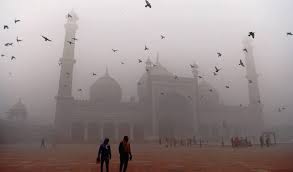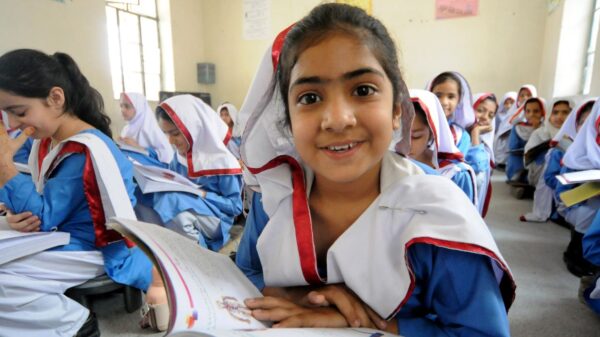Lahore: Lahore’s air quality showed a slight improvement on Sunday, with its Air Quality Index (AQI) dropping out of the “hazardous” range after weeks of dangerously high pollution levels. The city, often enveloped in thick smog, registered an AQI of 295, categorized as “very unhealthy.” Despite the improvement, Lahore still ranked as the second most polluted city in the world, with New Delhi, India, topping the global rankings with an AQI of 751, according to Swiss air quality monitoring group IQAir.
The pollution crisis in Lahore, home to over 14 million residents, continues to worsen, as smog remains a significant challenge. The city has faced rising pollution levels in recent years, exacerbated by cold air trapping dust, smoke from illegal stubble burning in nearby fields, and emissions from low-quality diesel fuels.
This annual winter smog crisis has intensified, and authorities have been forced to implement emergency measures to combat the worsening air quality. The situation is further aggravated by cross-border pollution, with authorities pointing to neighboring India as a key contributor to the toxic air.
While Lahore’s AQI fell slightly below the “hazardous” category, it remained dangerously high, reflecting the ongoing smog crisis that continues to disrupt daily life in the region. On Sunday, the city’s air quality still ranked among the worst in the world, with an AQI hovering near the 300 mark. Local authorities are struggling to address the growing pollution, which has led to disruptions in traffic and the closure of motorways.
As the pollution levels continue to rise across Punjab, Lahore remains a focal point of the crisis, with authorities working to mitigate the severe health and environmental impacts of the smog.
According to Swiss air quality monitoring group IQAir, any AQI reading above 300 is categorized as “hazardous.” On Sunday, Lahore’s air quality was still dangerously high, registering an AQI of 295, which remains in the “very unhealthy” range.
The smog crisis in the city prompted Senior Punjab Minister Marriyum Aurangzeb to declare a health emergency in Lahore and Multan on Saturday, describing the situation as a national disaster. She referenced the 10-year anti-smog plan launched by Chief Minister Maryam Nawaz Sharif in March and emphasized that all relevant departments had been assigned specific targets to combat the growing pollution.
In response to the worsening air quality, schools across Punjab have shifted to online classes, and the provincial government has enforced several measures to tackle the crisis. These include a 10-day ban on construction activities in the worst-affected cities, a complete weekend lockdown (Fridays, Saturdays, and Sundays), and restrictions on restaurants, which are limited to takeaway services after 4 p.m.
The city’s PM2.5 pollution levels were recorded at 220 µg/m³ — 44 times higher than the World Health Organization’s (WHO) recommended limits. However, Lahore is not alone in facing the brunt of the smog. Other major cities in Punjab, including Multan (228 µg/m³), Peshawar (166 µg/m³), Rawalpindi (145 µg/m³), Islamabad (144 µg/m³), and Karachi (134 µg/m³), also reported “unhealthy” to “moderate” AQI levels.
Traffic Disruptions and Visibility Issues
The thick smog severely impacted visibility, forcing the closure of several motorways in the region. The M-2 motorway, which connects Lahore to Kot Momin, and the M-11 motorway linking Lahore to Multan were closed due to poor visibility. Other routes affected included M-3 (Lahore to Darkhana), M-4 (Pindi Bhattian to Multan), and M-5 (Multan to Sukkur). However, the M-2 was later reopened for traffic.
Visibility issues led to a tragic accident in Kasur, where a truck carrying bricks overturned, resulting in one fatality.
Motorway police have advised the public to avoid unnecessary travel during foggy conditions, use fog lights, and refrain from speeding to reduce the risk of accidents.










